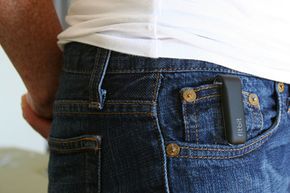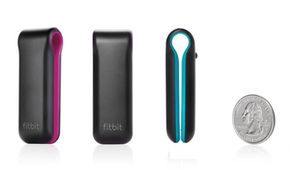When it comes to motivating people to work out, Richard Simmons has nothing on FitBit. FitBit is a physical activity tracker designed to help you become more active, eat a more well-rounded diet, sleep better and ultimately, turn you into a healthier human being. And it does it all without subjecting you to Simmons or his maniacal grin.
The FitBit was introduced in 2008 by co-founders Eric Friedman and James Park in San Francisco. In short, it's a 21st-century pedometer.
Advertisement
The equipment is deceptively simple. About the size of a clothes pin, the FitBit is shaped like a clip, which you can easily slide into your pants pocket or onto a bra strap, as it's only around 2 inches (5 centimeters) long and about half an inch (1.2 centimeters) thick. Throughout the day, FitBit logs a range of data about your activities, including the number of steps you take, distance traversed and calories burned. It's also sensitive enough to detect just how vigorous your motions are, which differentiates a slow stroll from a jog that consumes far more calories.
At night, you slip the FitBit into a wristband so it can monitor your sleep quality. It knows when you go to bed, how frequently you awaken and how long you lie prostrate, staring at the ceiling, pondering unmet deadlines. Thrashing around at midnight because of that quadruple latte you gulped at 4 p.m.? FitBit will know.
The clip has a built-in OLED (organic light-emitting diode) that scrolls current activity data. So if it's late in the day and you still have 8,000 steps to get to your goal of 15,000, you know it's time to get going, and fast. A little flower avatar "grows" as you become active; it gets shorter if laziness takes hold.
Every time you pass within 15 feet (4.5 meters) of its wireless base station, FitBit automatically offloads a cornucopia of numbers. From there, your statistics go to your online profile, where you can peruse details, monitor your progress (or lack thereof) and redouble your dedication to getting into shape.
Advertisement



